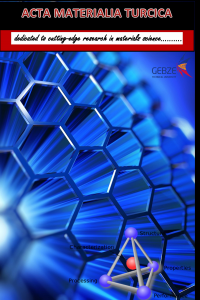Conference Paper
Year 2017,
Volume: 1 Issue: 1, 27 - 30, 28.12.2017
Abstract
In this study,
in order to optimize the energy efficiency of a brushless DC motor (BLDC), a
post-integration parameter calibration scheme is proposed and tested. The
controller gains are calculated in the model using the motor parameters
directly. A self-calibration algorithm is implemented, the change in parameters
is logged and the resulting efficiency change is calculated and presented. At
the end of the studies, a more effective system is obtained by checking the
resistance and the inductance values.
References
- 1. P. Waide, C. U. Brunner, “Energy‐efficiency policy opportunities for electric motor‐driven systems”, IEA Energy Efficiency Series, (2011)
- 2. D. Wilson, “Teaching Your PI Controller To Behave”, Motor Drive & Control Blog,Texas Instruments, (2015)
- 3. W. Wu, “DC motor identification using speed step responses”, American Control Conference (ACC), 2010
- 4. AA Bature, M. Muhammad, A. M. Abdullahi, “Identification and Real Time Control of a DC Motor”, IOSR Journal of Electrical and Electronics Engineering (IOSR-JEEE) e-ISSN: 2278-1676,p-ISSN: 2320-3331, Volume 7, Issue 4, 2013
- 5. P. Huynh, H. Zhu, D. Aliprantis, “Parameter estimation for single-phase induction motors using test measurement data”, North American Power Symposium (NAPS), 2016
- 6. A. M. El-Sawy, Y. S. Mohamed and A. A. Zaki, “Stator Resistance and Speed Estimation for Induction Motor Drives As Influenced by Saturation”, The Online Journal on Electronics and Electrical Engineering (OJEEE) Vol. (3) – No. (2), 2011
- 7. P. Blaha, P. Vaclavek, “AC Induction Motor Stator Resistance Estimation Algorithm”, 7th WSEAS International Conference on Electric Power Systems, High Voltages, Electric Machines, 2007
- 8. C.M.F.S.Reza, S. Mekhilef, “Online Stator Resistance Estimation Using Artificial Neural Network for Direct Torque Controlled Induction Motor Drive”, 2013 IEEE 8th Conference on Industrial Electronics and Applications (ICIEA), 2013.
Year 2017,
Volume: 1 Issue: 1, 27 - 30, 28.12.2017
Abstract
References
- 1. P. Waide, C. U. Brunner, “Energy‐efficiency policy opportunities for electric motor‐driven systems”, IEA Energy Efficiency Series, (2011)
- 2. D. Wilson, “Teaching Your PI Controller To Behave”, Motor Drive & Control Blog,Texas Instruments, (2015)
- 3. W. Wu, “DC motor identification using speed step responses”, American Control Conference (ACC), 2010
- 4. AA Bature, M. Muhammad, A. M. Abdullahi, “Identification and Real Time Control of a DC Motor”, IOSR Journal of Electrical and Electronics Engineering (IOSR-JEEE) e-ISSN: 2278-1676,p-ISSN: 2320-3331, Volume 7, Issue 4, 2013
- 5. P. Huynh, H. Zhu, D. Aliprantis, “Parameter estimation for single-phase induction motors using test measurement data”, North American Power Symposium (NAPS), 2016
- 6. A. M. El-Sawy, Y. S. Mohamed and A. A. Zaki, “Stator Resistance and Speed Estimation for Induction Motor Drives As Influenced by Saturation”, The Online Journal on Electronics and Electrical Engineering (OJEEE) Vol. (3) – No. (2), 2011
- 7. P. Blaha, P. Vaclavek, “AC Induction Motor Stator Resistance Estimation Algorithm”, 7th WSEAS International Conference on Electric Power Systems, High Voltages, Electric Machines, 2007
- 8. C.M.F.S.Reza, S. Mekhilef, “Online Stator Resistance Estimation Using Artificial Neural Network for Direct Torque Controlled Induction Motor Drive”, 2013 IEEE 8th Conference on Industrial Electronics and Applications (ICIEA), 2013.
There are 8 citations in total.
Details
| Subjects | Electrical Engineering |
|---|---|
| Journal Section | Research Articles |
| Authors | |
| Publication Date | December 28, 2017 |
| Published in Issue | Year 2017 Volume: 1 Issue: 1 |

